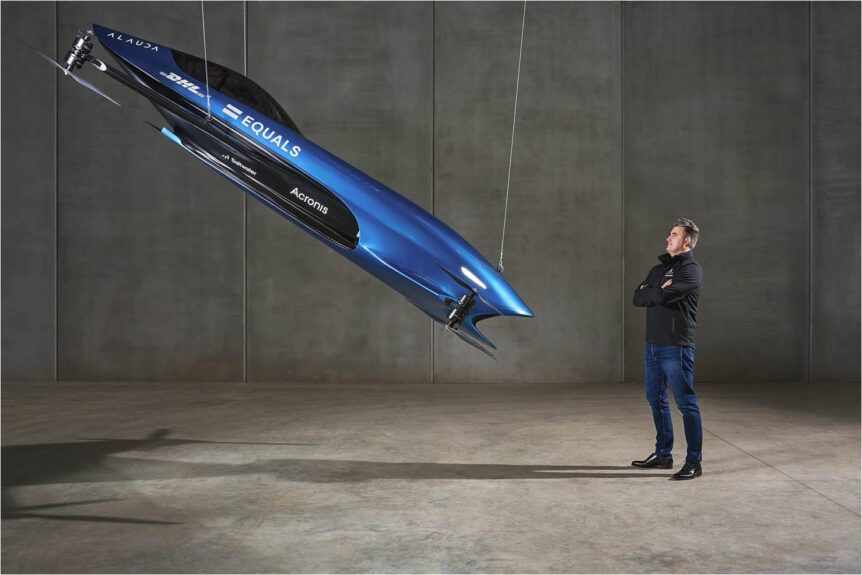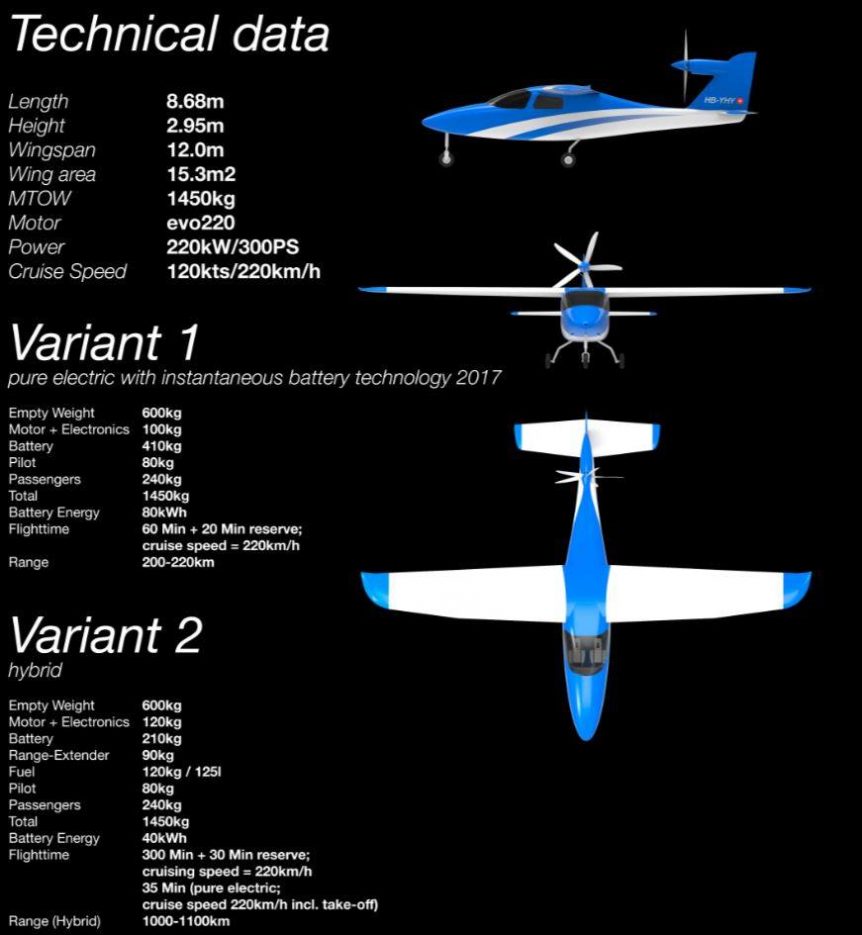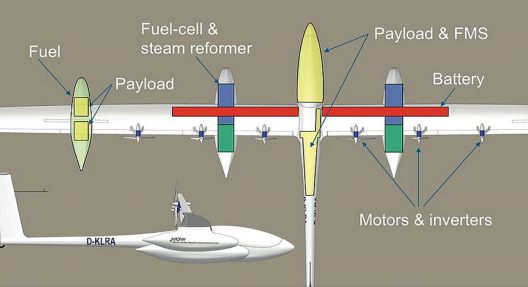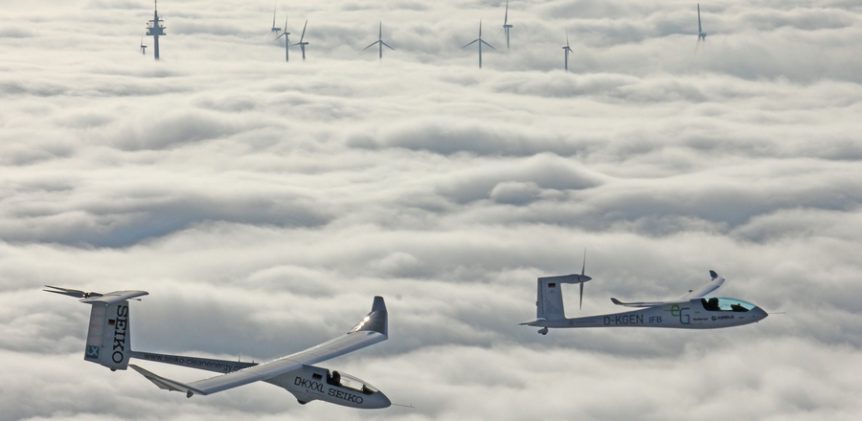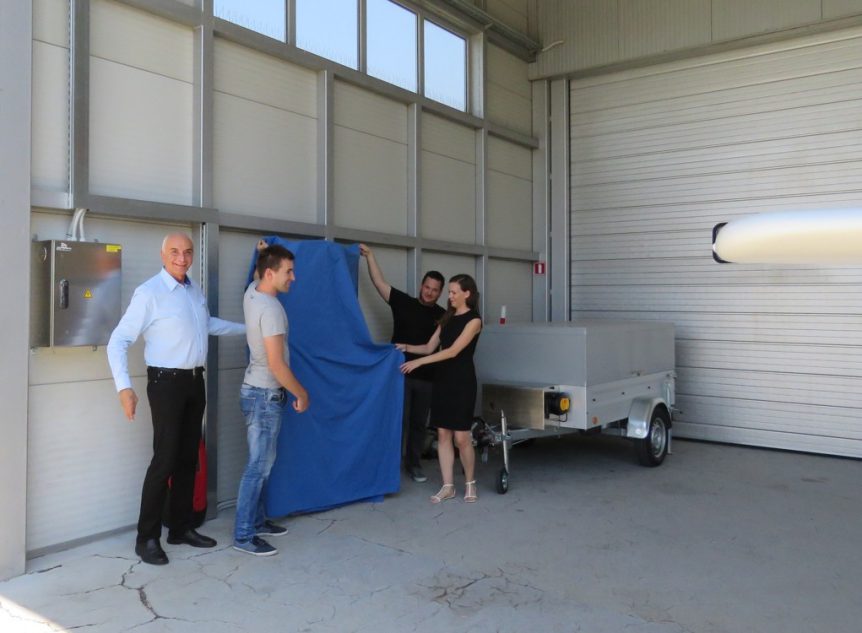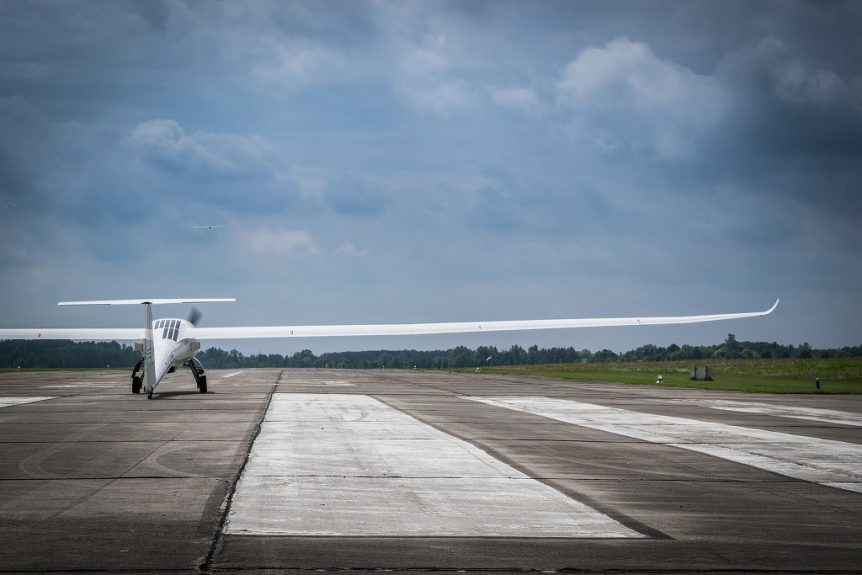Electric Air Racing is a modern take on an age-old idea. Ever since people tamed horses, the idea of comparing their speeds became important. Boats, cars, and aircraft followed the same path. As with horses, the idea that “racing improves the breed” held sway. Now, one Australian company and a major aeronautical organization hope to make air racing a path to the future. Alauda Aeronautics Matt Pearson founded the Airspeeder racing program with the credo, “Competition accelerates progress.” Toward that end, he partnered with Alauda, an Australian firm, to develop a group of high-performance aerial racers. Looking somewhat like the vehicles flown by Luke Skywalker in the Star Wars films, the “flying cars” certainly evoke a performance image. The team recently flew three Airspeeders via remote control with First Person View (FPV) technology helping ground-based pilots control their craft around a Alauda unabashedly uses the term “flying cars,” as in, “Racing to deliver a revolution in personal air mobility so …
Two Hydrogen-Powered Aerial Vehicles
Two very different hydrogen-powered aerial vehicles have come to our attention, each with a different mission, but both with endurance and range as primary functions. Both use a fairly straightforward fuel cell/motor arrangement to power their flights. Vicor/DMI Fuel Cell Drones Doosan Mobility Innovation (DMI) is a major drone manufacturer, and their largest products push against the FAA’s 55-pound (24.97-kilogram) weight limit. Their DM30, powered with a DS30 fuel cell and a 10.8 liter H2 tank weighs 21 kilograms and can carry a five kilogram (11 pound) payload. Carrying a full payload may require using the smaller seven-liter tank. Alessandro Mascellino, writing in EE Power, describes recent combination of resources that makes long-range drone deliveries possible. “The first machines built as part of the collaboration can fly two hours on a single charge and have already transported masks and emergency supplies between US Virgin Islands. The drones feature a number of power components by Vicor.” Partnering with Vicor, Doosan provides …
A Joyous Boxing Day Electrified
Boxing Day is a holiday unique to the British Empire, a day-after Christmas gift-giving celebration in which the well-off gave gifts to their servants. Yahoo Entertainment explains, “While there is some dispute over what the name actually means, it’s commonly believed that Boxing Day refers to the habit of aristocratic employees gifting their servants or tradesman on Dec. 26 as a thank you for their work throughout the year. The employers would give them each a box to take home to their family with gifts, bonuses and leftover food. “Samuel Pepys, a naval administrator and Member of Parliament, is famous for writing in his diary in 1663: ‘Thence by coach to my shoemaker’s and paid all there, and gave something to the boys’ box against Christmas.’” Certainly some regifting was in action, a chance for the upper class to get rid of fruitcakes sent by maiden aunts, or to reward particularly meritorious servants. In the spirit of Boxing Day, your …
First Lindbergh E-flight Rally
The Lindbergh E-flight Rally coinciding with Friedrichshafen’s annual Aero Expo will explore the growing capabilities of these amazing machines. The Lindbergh Foundation invites owners of electric aircraft to gather two days before the opening of Aero Expo 2020 to fly over the scenic marvels of Germany, alighting on Expo opening day “around 11 a.m., just on time for the AERO press conference.” The hoped-for en masse arrival would highlight the number of electric aircraft now flying and their reliability. Organizers explain, “Like the first ultralight aircraft did then, the first electric aircraft today need to prove that they already function perfectly.” The two-day aerial cortege would fly “along Lake Constance, and past castles, palaces, and churches, to a first stopover at Regio Airport Mengen, which was recently awarded a contract by the state of Baden-Württemberg for the construction of a test platform for electric flight/autonomous flying.” There, entrants will charge their batteries and head for their second and last …
The Villiger Traveler Updated
Urs Villiger flew his Traveler TR230 four-seat touring craft about 10 years ago. He started revising the Cessna-like vehicle two years ago, turning it into a more aerodynamic and economical machine. His changes turned the Traveler into a hybrid aircraft and relocated the propeller to the vertical stabilizer. Reflecting professor Dipl.-Ing. Rudolf Voit-Nitschmann’s configurations he developed for Icare II and e-Genius, the low-drag placement of the drive motor near the top of the vertical fin confines the added drag caused by the propeller’s acceleration of air over the aircraft’s skin to the top-most part of the fin and rudder. Compare the area exposed to propeller blast to that of a conventional nose-mounted engine “tractor” type aircraft. On static display at this September’s Smart Flyer Challenge in Grenchen, Switzerland, the newly revised Traveler showed a streamlined nose fairing that holds a gas turbine (reported from a Panavia Tornado fighter’s auxiliary power unit (APU) attached to the UQM motor/generator. That unit charges …
UMass Lowell Puts Hydrogen in a Canister
One problem with recharging electric vehicles is finding a charging station on the road. Electric vehicle makers provide GPS clues on their moving map displays, and electric pilots will doubtless have markers for fields with appropriate facilities for our future E-flyers. Researchers at the University of Massachusetts at Lowell may have done an end run around that problem, though. Their “new technology uses water, carbon dioxide and the metal cobalt to produce hydrogen gas on demand at a relatively low temperature and pressure.” The hydrogen produced goes directly to a fuel cell which generates electricity and powers the EV’s motor, rechargeable battery and headlights. When the canister that contains the H2 is empty, the driver can swap it with a “full” one. The researchers haven’t shared a great number of details, but we can guess the volume and weight of the canisters based on similar applications on the Pipistrel H4 and e-Genius, the much tested first and second-place winners, respectively, …
e-Genius Gets Around Quickly, Inspires Others
Birds of the Same Tail Feather Configuration Prof. Dipl.-Ing. Rudolf Voit-Nitschmann (emeritus) had a lot to do with designing the 1996 Icare II solar-powered sailplane and the 2011 e-Genius. Icare II set several world records in its 20 years, most under the guidance of pilot Klaus Ohlmann. e-Genius won the award for being the quietest airplane at the Green Flight Challenge held in Santa Rosa, California, and was a close second to Pipistrel’s G4 in passenger miles per gallon (equivalent) energy use. Dipl.-Ing. Voit-Nitschmann was kind enough to explain to your editor how the propeller center came to be at the top of the tail on e-Genius. It’s a similar configuration to that on the Icare II*, and one he had found to provide the greatest undisturbed air to the propeller and the least added friction drag, since only the lower part of the blade crossed in front of the upper part of the vertical fin and rudder. This configuration …
Pipistrel Opens World’s First True Airplane Charging Station
On August 30. Pipistrel inaugurated the first electric charging station to fully warrant the name, charging one of their own Alpha Electro trainers. The project was co-financed by the Ministry of Education, Science and Sport and the European Union from the European Social Fund. Led by Pipistrel, the LECAD Laboratory, and the Academy of Fine Arts and Design, mentors and students developed and constructed a fully-functioning station. Technical characteristics of the charging station: – capable of charging two electric aircraft at the same time – current strength: 2 x 20 kW – charge speed: one hour to fully charge Alpha Electro – operating voltage 3f 400V AC – WiFi connection to the network As Pipistrel explains, “The goal of the project was the production and installation of a (public) charging station for electric airplanes, since in the filling of electric aircraft, in practice, the need for stationary charging has been shown.” Mentors and students from LECAD Laboratory, the Academy of …
2017 Green Speed Cup – Airplanes More Frugal Than Priuses
The Green Speed Cup, held every year except for 2016 since 2011, is measure of an airplane’s efficiency, using a formula from the competition’s web site. “The scoring will be very simple. The aircraft that flew with the best ratio of fuel-consumption per distance and speed will win the competition. The scoring of each competitor will be related to the winner. The winner gets 1000 points for one day.” According to Robert Adam, one of the organizers of the Cup, “We had a fantastic Green Speed Cup (and rightfully but reasonably prods your editor for not covering the results sooner.) Luka Znidarsic from LZ Design won with his “front electric sustainer” Ventus glider. He had to close the gap between battery range and the given task range, but he managed with great success. In our overall statistics of the last 6 cups, he put the e-Genius quite far behind him.” Winning against e-Genius is a formidable accomplishment, since that and Pipistrel’s …
Hybrid Aircraft – Several Empowering Possibilities
While we wait (with increasing patience or impatience depending on our personalities) for the next round of battery developments to make pure electric airplanes a reality, hybrid possibilities abound. The definition of “hybrid” might not be as coherent as those used for automobiles. Some “hybrids in this entry allow extended letdowns following a primary engine failure. In that case, the added electric motor/generator gives extra minutes to find a safe landing space. While both motor and primary engine are operational, the system acts much like an automotive hybrid system, both motor and engine combining outputs for added power, or the electrical portion recharging batteries while the engine maintains cruise power. Some are more like automotive serial systems, an engine-driven generator charging batteries which power the propulsion motor. Pipistrel, though the Hypstair project, has a 200-kilowatt (268-horsepower) unit ready for test flights in 2017, according to Tine Tomazic, Director of Research and Development. Several Flying Now Several years ago, Flight Design …

